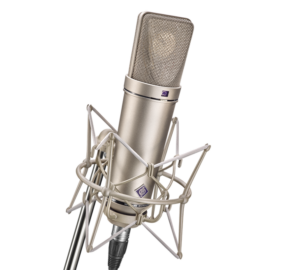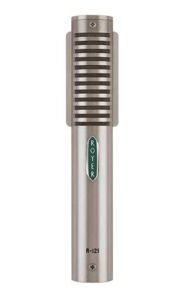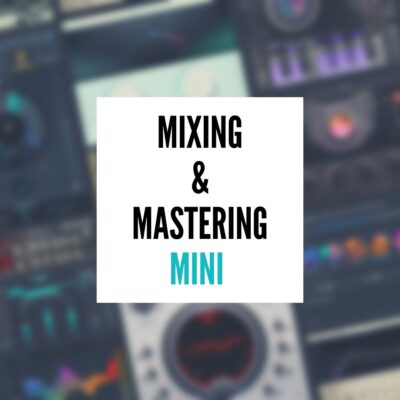Today, I’m diving deep into the heart of music production’s most pivotal tool: microphones. Whether you’re a budding musician, an aspiring producer, or simply a sound enthusiast, understanding the nuances of different microphone types is crucial. So, let’s embark on this sonic journey together, exploring dynamic, condenser, ribbon, and cardioid microphones, and uncovering the secrets behind capturing impeccable audio.
Dynamic Microphones: The Sturdy Workhorses
Dynamic microphones are renowned for their resilience and versatility, making them the go-to choice for live performances and environments where durability is key. But what exactly makes them so robust?
Characteristics: Dynamic microphones operate on the principle of electromagnetic induction. They feature a moving coil attached to a diaphragm, which vibrates in response to sound waves. This movement generates an electrical current, translating acoustic energy into an audio signal. Their simple design contributes to their ruggedness, capable of withstanding high sound pressure levels without distortion. This makes them ideal for capturing loud sources like guitar amplifiers and drums.
Applications: Given their durability, dynamic microphones excel in live performance settings. They’re less sensitive to moisture, temperature changes, and rough handling, compared to their condenser counterparts. This resilience also makes them suitable for miking loud instruments, where capturing the raw power without compromise is essential.
Famous Examples:
- Shure SM58: Often hailed as the quintessential live vocal microphone, the SM58 is celebrated for its clarity, durability, and ability to isolate vocals in the midst of background noise.
- Sennheiser MD 421: A versatile beast, the MD 421 shines across a spectrum of applications, from capturing the deep resonance of toms and kick drums to the nuanced timbres of guitars and vocals.
In the realm of dynamic microphones, these examples stand as testaments to the blend of durability and sound quality that has made them staples in the music industry.
Condenser Microphones: The Studio Virtuosos
Condenser microphones, with their heightened sensitivity and broad frequency response, are the jewels of studio recording. They capture sound with a level of detail and clarity that dynamic microphones can’t match, making them indispensable in a controlled studio environment.
Characteristics: The secret to a condenser microphone’s sensitivity lies in its construction. Unlike dynamic microphones, condensers use a capacitor to convert acoustic energy into an electrical signal. This design requires external power, commonly supplied via phantom power, to maintain an electrical charge between the microphone’s diaphragm and a backplate. This setup allows for finer vibration capture, translating into higher sensitivity and a wider frequency response.
Applications: The precision of condenser microphones makes them ideal for capturing vocal performances and acoustic instruments in the studio. Their ability to pick up subtle nuances and the wide range of frequencies enhances the depth and clarity of recordings.
Famous Examples:

- Neumann U87: A legend in its own right, the U87 is revered for its warm, rich sound and versatility. Its presence in countless classic recordings cements its status as a studio icon.
- AKG C414: Known for its detailed sound and flexibility, the C414 offers multiple pickup patterns, allowing engineers to tailor the mic’s response to the specific needs of each recording session.
Condenser microphones, with their unparalleled sensitivity and fidelity, are indispensable tools in the pursuit of studio perfection.
Ribbon Microphones: The Soulful Classics
Ribbon microphones, often regarded as the vintage soul of the microphone world, offer a unique sound character that has captivated engineers and artists alike for decades. Their design and sound reproduction differ significantly from dynamic and condenser microphones, providing a warmth and naturalness that’s hard to replicate.
Characteristics: At the heart of a ribbon microphone is a thin, lightweight metal ribbon suspended in a magnetic field. Sound waves cause this ribbon to vibrate, generating an electrical signal. This design allows for an exceptionally smooth and natural sound, capturing the nuances of performances in a way that feels almost tactile. Ribbon microphones are known for their figure-eight polar pattern, picking up sounds from the front and back while rejecting sounds from the sides. This bidirectional pattern is intrinsic to their design and contributes to their ability to produce such a natural soundstage.
Applications: Ribbon microphones excel in settings where natural, warm sound capture is desired. They are particularly favored for recording string instruments, brass, and vocals, where their ability to soften harsh frequencies can make a recording shine. Their figure-eight pattern also makes them ideal for capturing room ambience or for use in mid-side stereo recording techniques.
Famous Examples:

Royer R-121
- Royer R-121: A modern classic, the R-121 brings ribbon microphone technology into the contemporary studio with its robust design and exceptional sound quality. It’s particularly beloved for guitar cabinets and brass instruments.
- Coles 4038: With a history dating back to the BBC in the 1950s, the 4038 is famed for its smooth response and detailed sound, making it a favorite for drum overheads and orchestral recordings.
Ribbon microphones, with their distinctive sound and design, offer a bridge to the past, capturing audio with a warmth and authenticity that’s unmatched. They remind us of the artistry in sound recording, providing a palette of sonic colors that enrich the tapestry of music production.
Cardioid Microphones: The Focused Sound Capturers
While we’ve explored dynamic, condenser, and ribbon microphones as distinct categories, it’s crucial to understand that cardioid refers to a microphone’s polar pattern rather than its type. Cardioid microphones are named for their heart-shaped (or cardioid) pattern of sound sensitivity, offering focused pickup from the front and sides, with rejection from the rear.
Characteristics: The cardioid pattern is the most common directional pattern found in microphones of all types. This pattern is designed to maximize the capture of sound from the direction the microphone is pointed while minimizing background noise and feedback from other directions. This makes cardioid microphones incredibly versatile, suitable for a wide range of applications where isolating the sound source is desired.
Applications: Cardioid microphones are used in both live and studio settings. They are particularly useful in noisy environments or when multiple sound sources are present, such as on a live stage. In the studio, cardioid microphones can help isolate individual instruments or vocals, making them easier to mix.
Famous Examples:
- Shure SM58 (Dynamic): A classic example of a dynamic cardioid microphone renowned for its use in live vocal applications.
- AKG C414 (Condenser): While known for its versatility in pickup patterns, its cardioid setting is often used for studio recordings, offering clear, detailed capture of vocals and instruments.
The cardioid pattern’s ability to focus on the sound source while rejecting unwanted background noise makes it a fundamental tool in the audio recording and reinforcement world.
Cardioid vs. Condenser Microphones: Understanding the Distinction
It’s important to clarify that comparing cardioid to condenser microphones is somewhat of a misnomer. Condenser refers to the technology used to capture sound, characterized by its sensitivity and wide frequency response. Cardioid, on the other hand, describes a polar pattern that can be found in both dynamic and condenser microphones. The key is understanding that a cardioid condenser microphone combines the sensitivity of condenser technology with the directional focus of the cardioid pattern, making it ideal for studio applications where clarity and isolation are paramount.
Choosing the right microphone involves considering the recording environment, the sound source, and the desired outcome. A cardioid pattern, whether in a dynamic, condenser, or ribbon microphone, offers focused sound capture, making it a versatile choice for various applications. Meanwhile, condenser microphones, known for their detail and sensitivity, are best suited for controlled studio environments where capturing the full spectrum of sound is desired.
Conclusion: What is the Right Microphone
In the intricate dance of sound recording, microphones serve as the critical interface between the physical energy of music and its digital capture. As we’ve journeyed through the characteristics, applications, and iconic examples of dynamic, condenser, ribbon, and cardioid microphones, a common theme emerges the importance of choosing the right microphone for the right situation. This choice is not merely technical but deeply artistic, influencing the texture, emotion, and authenticity of the recorded sound.
The Art of Selection: Selecting the perfect microphone for a given application is akin to an artist choosing their palette before touching brush to canvas. It requires an understanding of the microphone’s inherent qualities and how they interact with the sound source and the environment. A dynamic microphone might capture the raw power of a live drum kit, while a condenser microphone might better serve the nuanced performance of a classical vocalist in the acoustically controlled environment of a studio. A ribbon microphone could be the key to adding warmth and vintage character to a saxophone solo, and a cardioid pattern might help isolate a lead guitar in a crowded mix.
Beyond the Technical: While technical specifications and polar patterns are crucial, the soul of sound recording lies in listening—understanding the subtle interplay between microphone and source and how it affects the emotional impact of the music. The choice of a microphone can elevate a good recording to a great one, capturing not just the sound but the spirit of the performance.
A Call to Experimentation: I encourage you, whether you’re a seasoned engineer or a home studio hobbyist, to experiment with different types of microphones. Each microphone brings its unique color to the sonic palette, and sometimes the most unexpected choices yield the most captivating results. Remember, the rules of sound recording are not set in stone but are guidelines to be played with and, when appropriate, challenged.
Building Trust Through Sound: In adhering to the principles of Expertise, Authoritativeness, and Trustworthiness (E-A-T), this exploration into microphones is more than a technical guide; it’s a testament to the art and science of sound recording. By sharing knowledge and experiences, we build a community of trust, continually pushing the boundaries of what’s possible in the pursuit of sonic excellence.
Final Thoughts: As we conclude this guide, remember that the journey of sound recording is perpetual, with each session offering new challenges and opportunities for growth. The world of microphones is vast and varied, each type and model holding the potential to unlock new dimensions of sound. Whether you’re capturing the delicate whispers of a string quartet or the thunderous roar of a rock band, the right microphone is out there, waiting to translate those vibrations into the digital realm with fidelity, warmth, and clarity.
In the end, the microphones we choose become extensions of our creative vision, tools through which we sculpt the airwaves into art. So, take this knowledge, experiment with passion and purpose, and craft recordings that not only capture sound but resonate with the soul.
Thank you for joining me on this sonic exploration. If you need help mixing and mastering your songs, please feel free to reach out!






